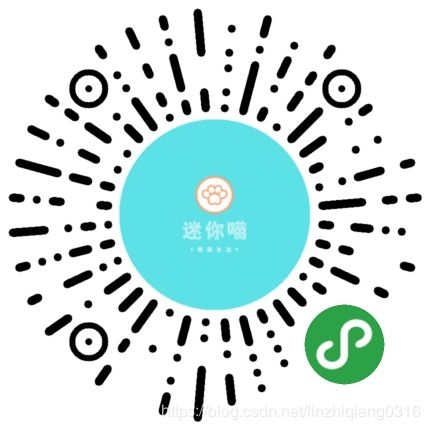SpringBoot整合Mybatis实现增删改查的功能
SpringBoot框架作为现在主流框架之一,好多框架都渐渐的移植到SpringBoot中来。前面我给大家介绍过redis,jpa等等的的整合,今天在这里给大家介绍一下Mybatis的整合过程。
想学习分布式、微服务、JVM、多线程、架构、java、python的童鞋,千万不要扫码,否则后果自负~
SpringBoot+Mybatis一般有两种形式。一种是采用原生的xml模式,还有一种就是采用注解模式。今天我给大家介绍的就是后者,也就是注解模式。
1.首选需要在SpringBoot的启动类里面增加用来扫描Mapper接口的注解,用来扫描Mapper包下面的接口。
package com.joy;
import org.mybatis.spring.annotation.MapperScan;
import org.springframework.boot.SpringApplication;
import org.springframework.boot.autoconfigure.SpringBootApplication;
@SpringBootApplication
@MapperScan("com.joy.*")
public class App {
public static void main(String[] args) {
SpringApplication.run(App.class, args);
}
}
在这里我扫描的是项目的根目录,只要能扫描到的包含Mapper接口的范围就可以。如果大家知道Mapper接口的具体位置,建议大家可以精确一点。
2.在application.properties配置文件中添加数据库的支持
#DB Configuration:
spring.datasource.driverClassName = com.mysql.jdbc.Driver
spring.datasource.url = jdbc:mysql://localhost:3306/mybatis_db?useUnicode=true&characterEncoding=utf-8&useSSL=false
spring.datasource.username = root
spring.datasource.password = 220316
这个关于数据库配置的代码其实很简单
第一个是数据库所用的驱动
第二个是数据库url地址,这里我连接的名字为mybatis_db数据库
第三第四是数据库连接的用户名和密码
3.pom.xml文件中添加相应的jar包
这里我就不一一介绍了,大家看一下demo就知道需要添加哪些内容了。
主要是SpringBoot相关的jar包,mybatis相关的jar包就ok了
4.0.0
springboot-mybatis
com.joy
war
0.0.1-SNAPSHOT
com.joy Maven Webapp
http://maven.apache.org
org.springframework.boot
spring-boot-starter-parent
1.5.7.RELEASE
1.8
org.springframework.boot
spring-boot-starter-web
javax.servlet
javax.servlet-api
mysql
mysql-connector-java
com.github.pagehelper
pagehelper
4.1.0
org.mybatis.spring.boot
mybatis-spring-boot-starter
1.2.2
junit
junit
test
springboot-mybatis
4.上面准备都完成了,我们就可以开始正式mybatis项目的开发了。这里需要先新建一个数据库映射的实体类,名字叫做UserEntity。
package com.joy.entity;
import java.util.Date;
public class UserEntity {
private long userId;
private String userCode;
private String userName;
private String nickName;
private String userPwd;
private Date createDate;
private Date updateDate;
public long getUserId() {
return userId;
}
public void setUserId(long userId) {
this.userId = userId;
}
public String getUserCode() {
return userCode;
}
public void setUserCode(String userCode) {
this.userCode = userCode;
}
public String getUserName() {
return userName;
}
public void setUserName(String userName) {
this.userName = userName;
}
public String getNickName() {
return nickName;
}
public void setNickName(String nickName) {
this.nickName = nickName;
}
public String getUserPwd() {
return userPwd;
}
public void setUserPwd(String userPwd) {
this.userPwd = userPwd;
}
public Date getCreateDate() {
return createDate;
}
public void setCreateDate(Date createDate) {
this.createDate = createDate;
}
public Date getUpdateDate() {
return updateDate;
}
public void setUpdateDate(Date updateDate) {
this.updateDate = updateDate;
}
}
5.因为mybatis和jpa不一样,不会通过映射实体类反向生成数据库的表和字段。所以就得我们自己来新建一个表和字段。这里我新建一个user表。

我们可以利用navicat来手动的新建这张表并加相应的数据,也可以通过sql命令来实现,sql命令如下所示:
SET FOREIGN_KEY_CHECKS=0;
-- ----------------------------
-- Table structure for user
-- ----------------------------
DROP TABLE IF EXISTS `user`;
CREATE TABLE `user` (
`user_id` int(10) NOT NULL AUTO_INCREMENT,
`user_code` varchar(20) DEFAULT NULL,
`user_name` varchar(20) DEFAULT NULL,
`nick_name` varchar(20) DEFAULT NULL,
`user_pwd` varchar(20) DEFAULT NULL,
`create_date` datetime DEFAULT NULL,
`update_date` datetime DEFAULT NULL,
PRIMARY KEY (`user_id`)
) ENGINE=InnoDB AUTO_INCREMENT=3 DEFAULT CHARSET=utf8;
-- ----------------------------
-- Records of user
-- ----------------------------
INSERT INTO `user` VALUES ('1', '10001', 'user10001', 'no1', '123456', '2017-10-22 15:23:32', '2017-10-22 15:23:35');
INSERT INTO `user` VALUES ('2', '10002', 'user10002', 'no2', '123456', '2017-10-22 15:23:32', '2017-10-22 15:23:35');
6.接下来就是最重要的编写Mapper接口,我们这里采用通过注解来实现数据库的增删改查功能。
增删改查分别对应的注解为@Insert,@Delete,@Update,@Select
关于注解的使用细节,我这里举select的例子来给大家解释一下。
@Select("select * from user")
@Results({
@Result(property = "userId", column = "user_id"),
@Result(property = "nickName", column = "nick_name"),
@Result(property = "userCode", column = "user_code"),
@Result(property = "userName", column = "user_name"),
@Result(property = "userPwd", column = "user_pwd"),
@Result(property = "createDate", column = "create_date"),
@Result(property = "updateDate", column = "update_date") })
public List queryList();
上面是查询数据库user表的所有数据,然后会自动的转为list集合。其中column里面的字段名称必须和数据库里面表的字段一模一样,property里面的字段属性必须和UserEntity这个实体类对应的字段一模一样。
@Select("SELECT * FROM USER WHERE user_id = #{userId}")
@Results({
@Result(property = "userId", column = "user_id"),
@Result(property = "nickName", column = "nick_name"),
@Result(property = "userCode", column = "user_code"),
@Result(property = "userName", column = "user_name"),
@Result(property = "userPwd", column = "user_pwd"),
@Result(property = "createDate", column = "create_date"),
@Result(property = "updateDate", column = "update_date") })
UserEntity findById(long userId);
上面这种形式是通过传入一个字段来查询数据。这里需要注意的是#{}里面的字段内容必须和findById里面传入的字段一模一样。除了#{}以外的字段都必须满足sql的查询格式。这里大家不要误解了,findById可以随便定义和jpa中是不一样的。
下面将给出增删改查的所有代码,如下所示:
package com.joy.dao;
import java.util.List;
import java.util.Map;
import org.apache.ibatis.annotations.*;
import com.joy.entity.UserEntity;
public interface UserMapper {
@Select("select * from user")
@Results({
@Result(property = "userId", column = "user_id"),
@Result(property = "nickName", column = "nick_name"),
@Result(property = "userCode", column = "user_code"),
@Result(property = "userName", column = "user_name"),
@Result(property = "userPwd", column = "user_pwd"),
@Result(property = "createDate", column = "create_date"),
@Result(property = "updateDate", column = "update_date") })
public List queryList();
@Select("SELECT * FROM USER WHERE user_id = #{userId}")
@Results({
@Result(property = "userId", column = "user_id"),
@Result(property = "nickName", column = "nick_name"),
@Result(property = "userCode", column = "user_code"),
@Result(property = "userName", column = "user_name"),
@Result(property = "userPwd", column = "user_pwd"),
@Result(property = "createDate", column = "create_date"),
@Result(property = "updateDate", column = "update_date") })
UserEntity findById(long userId);
@Insert("INSERT INTO USER(nick_name, user_code) VALUES(#{nickName}, #{userCode})")
int insertParam(@Param("nickName") String nickName, @Param("userCode") String userCode);
@Insert("INSERT INTO USER(nick_name, user_code) VALUES(#{nickName,jdbcType=VARCHAR}, #{userCode,jdbcType=INTEGER})")
int insertByMap(Map map);
@Insert("insert into user(nick_name,user_code,user_name,user_pwd,create_date,update_date) values(#{nickName},#{userCode},#{userName},#{userPwd},#{createDate},#{updateDate})")
public int insertEntity(UserEntity entity);
@Update("UPDATE user SET nick_name=#{nickName} WHERE user_id=#{userId}")
int updateEntity(UserEntity user);
@Delete("DELETE FROM user WHERE user_id =#{userId}")
int delete(Long userId);
@Delete("DELETE FROM user WHERE user_id =#{userId}")
int deleteEntity(UserEntity entity);
}
7.最后就是编写相应的service和controller类来调用这些增删改查的接口。
service类信息:
package com.joy.service;
import java.util.Date;
import java.util.HashMap;
import java.util.List;
import java.util.Map;
import org.springframework.beans.factory.annotation.Autowired;
import org.springframework.stereotype.Service;
import com.joy.dao.UserMapper;
import com.joy.entity.UserEntity;
@Service
public class UserService {
@Autowired(required = false)
private UserMapper mapper;
public List queryList(){
List userList=mapper.queryList();
return userList;
}
public UserEntity findById(long userId){
System.out.println("userId:"+userId);
return mapper.findById(userId);
}
public int insertEntity() {
UserEntity entity=new UserEntity();
entity.setUserName("lisi");
entity.setUserCode("lisi"+new Date());
entity.setNickName("郭靖");
entity.setUserPwd("123");
entity.setCreateDate(new Date());
entity.setUpdateDate(new Date());
return mapper.insertEntity(entity);
}
public int insertParam() {
return mapper.insertParam("linzhiqiang","lzq");
}
public int insertByMap() {
Map map=new HashMap();
map.put("nickName","zhaotong");
map.put("userCode","zt");
return mapper.insertByMap(map);
}
public int updateEntity() {
UserEntity entity=new UserEntity();
entity.setUserId(1);
entity.setNickName("郭靖");
return mapper.updateEntity(entity);
}
public int deleteEntity() {
UserEntity entity=new UserEntity();
entity.setUserId(11);
return mapper.deleteEntity(entity);
}
}
controller类信息:
package com.joy.controller;
import java.util.List;
import org.springframework.beans.factory.annotation.Autowired;
import org.springframework.web.bind.annotation.RequestMapping;
import org.springframework.web.bind.annotation.RestController;
import com.github.pagehelper.PageHelper;
import com.joy.entity.UserEntity;
import com.joy.service.UserService;
@RestController
public class UserController {
@Autowired
private UserService userService;
@RequestMapping("/userlist")
public List queryList(){
PageHelper.startPage(1, 2);
return userService.queryList();
}
@RequestMapping("/queryUser")
public UserEntity queryUserEntity(long userId){
UserEntity userEntity=userService.findById(userId);
return userEntity;
}
@RequestMapping("/insert")
public int insertEntity() {
return userService.insertEntity();
}
@RequestMapping("/insertParam")
public int insertParam() {
return userService.insertParam();
}
@RequestMapping("/insertByMap")
public int insertByMap() {
return userService.insertByMap();
}
@RequestMapping("/updateEntity")
public int updateEntity() {
return userService.updateEntity();
}
@RequestMapping("/deleteEntity")
public int deleteEntity() {
return userService.deleteEntity();
}
}
8.如果想要将执行的sql打印在控制台上面,可以在application.properties添加如下的配置信息。
logging.level.com.joy=DEBUG
这里需要特别注意的是:level后面是你项目包的地址不要写的和我一样。到这里关于SpringBoot整合Mybatis项目就介绍完毕,如果大家想要源代码的话可以去我的GitHub地址下载。
GitHub地址:https://github.com/1913045515/MyBatis.git
如果按照博客上面写的步骤操作还有问题,可以观看我为大家录制的视频讲解。因为本人不是专业的讲师,所以可能讲的不是特别细致。有什么建议都可以提出来,谢谢大家。视频地址:https://pan.baidu.com/s/1qYcFDow点击打开链接
如果大家对文章有什么问题或者疑意之类的,可以加我订阅号在上面留言,订阅号上面我会定期更新最新博客。如果嫌麻烦可以直接加我wechat:lzqcode


